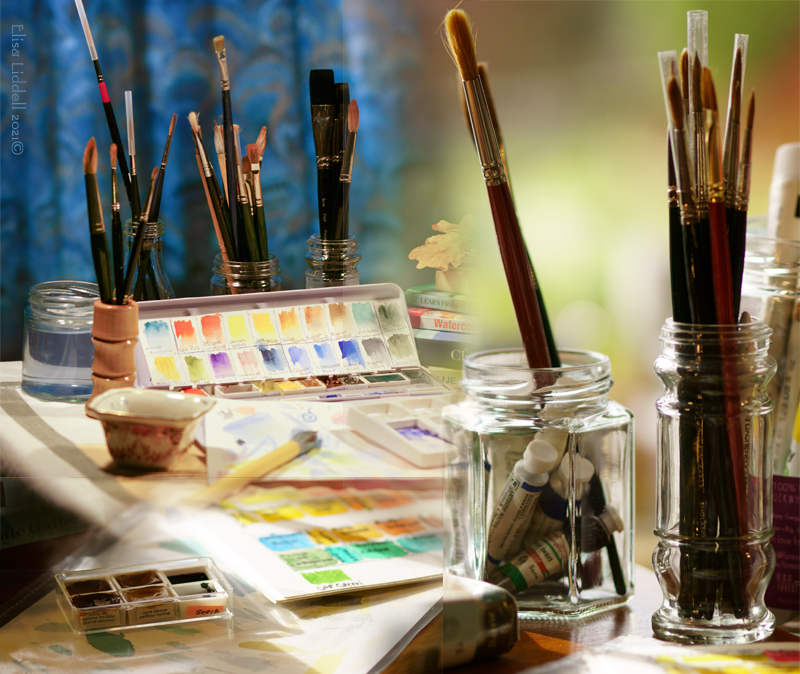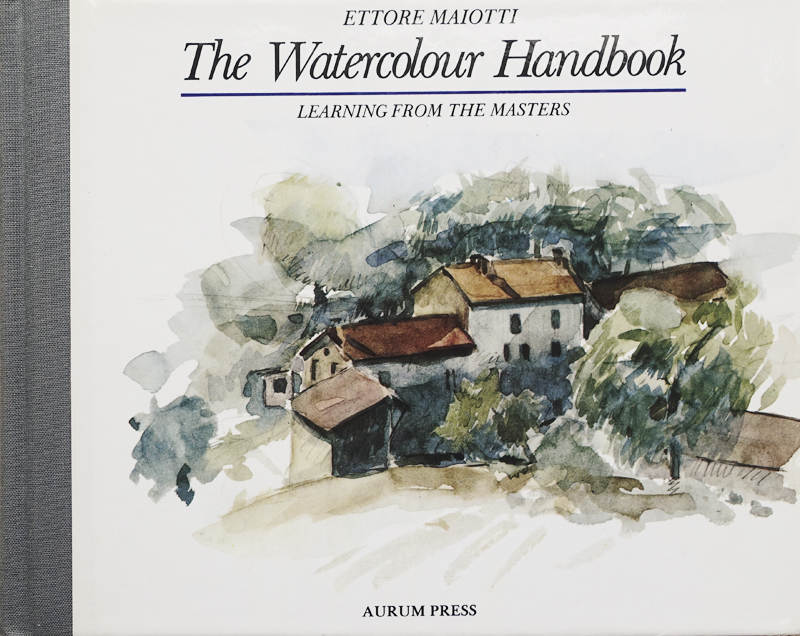
As I commented in the ‘Hands On’ cover page, after years of creating images through photography, I find I want to be more ‘hands on’ and paint again! I have so many photographs in my graphics store – I want to re-imagine those landscapes and still life studies myself, with real paints, paintbrushes and paper. So my question is ….. can I find the skills to make them into the images I see in my imagination?
And the medium that draws me in is watercolour. Why watercolour? It is a medium that is still greatly undervalued, seen as useful for preliminary sketches, or for weekend amateurs. Yes – the art world is still incredibly snobbish! I suspect that both pastel and watercolour are also looked down on through misogyny – because historically they were seen as ‘women’s media’.
I have come to admire watercolour as the most subtle and luminous of paint media. I’ve spent years with the camera chasing the light, expressing myself with light (both natural and studio). Watercolour begins with pure white paper, so the light is there from the beginning. And watercolours are delicate, bright and luminous, and the light of the paper can shine through them. Everyone seems to agree that watercolours are the most difficult medium to work in …. as once a stroke is made you are committed. You can’t scrape back the paint and start again as you can with acrylics and oils. So there is a tension, a ‘holding your breath’ aspect to the painting. It is all too easy to make a false mark … and that is both scary and compelling!
So the first thing for me to do was to open up the drawers and cupboards in my art room, and find out what I had! When the big relapse happened I was already investigating watercolour painting – but that is so long ago that I’d forgotten – so it was a voyage of discovery, or re-discovery! I knew I had a full-pan set of quality watercolours, some brushes, some paper and some books. So I was ready to roll! But would the paints and paper still be useable ? Would the books be way out of date … after all it was about 20 years that they had been lying unused!
I needed a quick refresher course – but I didn’t want to start from the beginning, I had a fairly clear idea of where I wanted to take my painting, what I wanted to achieve. Maybe the best way was to simply jump straight in, and learn what I needed as I went along … it seemed like a good plan, and I was impatient to start!

I picked the small book that I had used as my starting point all those years ago. Ettore Maiotti described how he learned from studying the artists whose work he felt most drawn to. He would learn their techniques.
There were a few basic exercises such as copying a simple apple by Cezanne, some advice on equipment and technique … and I felt ready to start something of my own!
I’ve been shooting trees for so long, they are difficult to capture, but they fascinate me. So I started with a tree. A rough sketch of one I’d photographed. I wanted to keep the tree trunk and branches white, and create a dramatic sky behind, weaving gently into the tree itself.
I must have made every beginner’s mistake!!
* I didn’t mask out the white areas before applying the background washes.
* I didn’t realise that my colour choices were all wrong for the effects I wanted. I was using opaque and staining colours when I needed transparent ones to build up luminous and subtle colour effects.
* I tried to remove or soften the colours, and ended up scratching lumps out of the paper!
A change of plan was called for – I really needed to go back to basics and learn about pigments, and how to apply them! But I didn’t want to spend months painting flowers, or figure studies. I knew who I wanted to learn from – Paul Cezanne!
Watercolour 1 – The Journey with Cezanne really begins
Watercolour 2 – Study and learn through copying
Watercolour 3 – Make my own ‘in the style of’ Cezanne
Watercolour 4 – Choose a palette – cutting the ties!
Back to the Hands On cover page
Flickr holds Elisa’s online Photo Gallery
© 2022 Elisa Liddell
